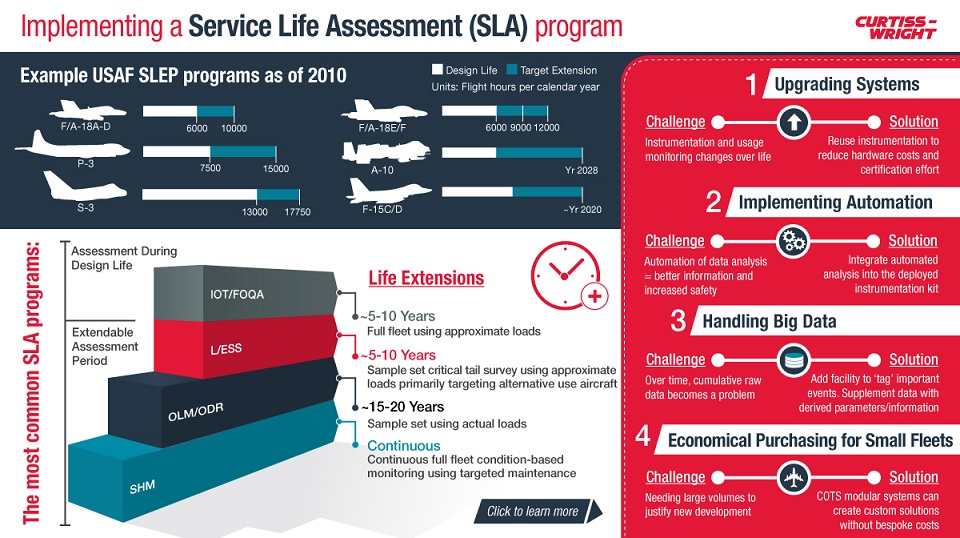
New aircraft are expensive, but there comes a point when the risk of an accident caused by a failing airframe is too great and you’ve got little other choice than to replace the old with the new. But when is the right time? An aircraft manufacturer will tell you, for example, how many flight hours or take-offs and landings an aircraft is good for. But, if this estimation is too conservative, or the aircraft has seen fewer stresses and strains than the manufacture assumed, then could an aircraft’s safe lifetime be extended?
Assessing an aircraft’s remaining life can be achieved using service life assessment programs. Each of these programs have somewhat different life extension objectives, but they all basically do the same thing – gather and analyze data. Flight Operational Quality Assurance (FOQA) and Loads/Environment Spectra Survey (L/ESS) gather approximate data on aircraft stresses and both seek to look forward 5-10 years and use limited numbers of sensors.
Operational Loads Monitoring (OLM) and Operational Data Recording (ODR) programs more heavily instrument a small sample of aircraft from a fleet to gather real airframe stresses and look to validate aircraft lifetime extension in the 15 to 20 year time frame. Structural Health Monitoring (SHM) programs constantly monitor airframe stresses to provide an early warning of any structural failures and, when used with a Condition Based Monitoring (CBM) program, to reduce maintenance costs by shifting away from a periodic maintenance schedule to one based only on need.

It is common that a particular asset will experience many of these programs, and the subsequent phases of instrumentation, during its lifetime. Performing an instrumentation system upgrade every few years can be non-trivial, if the upgrades involve re-tendering, sourcing and purchasing new equipment, and undergoing re-certification. It therefore makes sense to use an upgradeable system to reduce hardware costs and certification effort in the future, should such be required.
Similarly, consideration should be given to the common pain points that are encountered by integrators and operators during a continued airworthiness program. These include
- Big data: Gathering large volumes of data over months and years can lead to difficulties in extracting useful information. This can result in program scope being reduced simply to make the program manageable.
- Automation: Shifting work from manual to well implemented automated tasks generally leads to better information extraction and increased safety.
- Small fleet size: The commercial viability of small to medium fleet life extension programs can be hard to establish when avionics providers need large volumes to justify new development.
Curtiss-Wright has considered all these issues and proposed a scalable solution using our data acquisition systems that addresses the principle pain-points encountered during service life assessment programs. You can read more details in our Continued Airworthiness: Assuring a Lifetime of Safe Flight white paper.